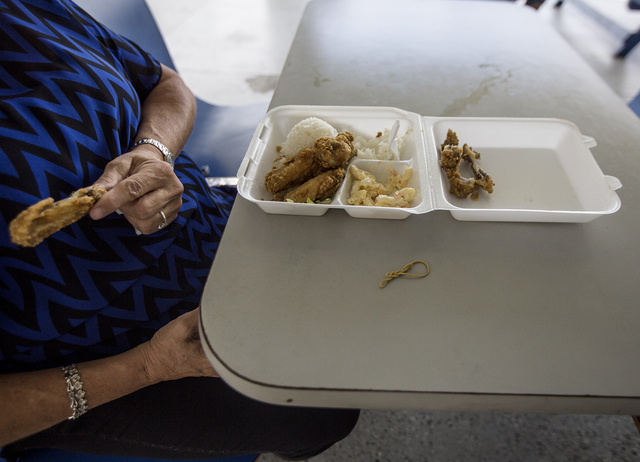In June, the County Council defeated a bill that would have heavily restricted the use of expanded polystyrene products, more commonly known as Styrofoam, across Hawaii Island’s food industry.
But proponents of the legislation aren’t ready to put the issue to bed.
Bill 140, sponsored by Kohala Councilwoman Margaret Wille, would have prohibited any food service provider on the island from using Styrofoam in disposable food packaging. They would have instead been required to utilize reusable or compostable products, save for a few exemptions.
The bill stalled after a 4-4 vote. But Wille, who was narrowly ousted from her District 9 seat in August’s primary, will propose a modified version of the bill this week as one of her final legislative acts. She described the bill as “140 light.”
“The big difference is that the prohibitions in Bill 140 were sort of across the board, but this bill only prohibits the county, county vendors and county facility users (from using foam containers),” Wille said. “If we think this is important, then we should act as an example.”
Community organizations that support Wille’s endeavor have taken those words to heart. Such is evidenced by a shift in their grassroots strategy toward a focus on a handful of Big Island businesses that have taken it upon themselves to enact a foam-free policy within their establishments, despite no law requiring that they do so.
The Hawaii Wildlife Fund, the Surfrider Foundation and Sustainable Island Products compiled a list of 131 companies that fit this bill, so to speak, which can be accessed at goo.gl/tia7Rd.
“We live on an island, and we need to be mindful about what we are bringing in and to consider how short the useful lifecycle of these so called ‘single-use products’ really is compared to their long life in the environment,” wrote Megan Lamson, vice president of the Hawaii Wildlife Fund, in a joint press release. “EPS foam may take decades or even centuries to degrade. A compostable container, on the other hand, will break down — by definition — in 180 days.”
Hawaii Island will be equipped with such a composting facility by July of 2018.
Opposition arguments to Bill 140 were generally tinted with business concerns, particularly over an increase in price for food service providers and the negative implications for a polystyrene plant on Oahu, which employs in the neighborhood of 100 people.
Some opponents of the bill also shifted responsibility for negative environmental consequences from the businesses who offer foam containers to the consumers who don’t dispose of them properly.
“People who litter are gonna litter,” Hilo Councilman Dennis “Fresh” Onishi said back in June. He also invoked data from a recent survey indicating the majority of pollution in Hawaiian waters originated in other countries.
Wille acknowledged that the shift would drive up costs for businesses, but added they would be far from prohibitive.
Whether the changes to the failed Bill 140 will garner any change in opinion toward the new legislation remains to be seen.
Hilo Councilman Aaron Chung and Puna Councilman Gregor Llagan did not return requests for comment on the matter. Puna Councilman Danny Paleka could not be reached and Onishi declined to comment.
The 4-4 vote on Bill 140 drew a few noticeable lines through the Council’s members. All four members who voted against the bill represent East Hawaii, while the four who supported it represent West Hawaii. The Council’s ninth member, Dru Kanuha, who represents Kona, did not attend the vote. He had previously voted against the bill.
Also, the four proponents of the bill were women, while the four opponents were men.
But big changes are coming to the Council in December, when Wille and Paleka will vacate their seats after losing elections and Llagan and Onishi will exit because of term limits.
Wille said her hope is that the new, scaled-back approach to foam control can at least pick up some traction before sweeping changes come to the Council. If nothing else, though, she believes her work has propelled the conversation forward and brought the issue to the attention of Hawaii Island residents.
And there does appear to be significant community support behind her proposal.
Sarah Rafferty, the Rise Above Plastics coordinator with the Surfrider Foundation Kona, started a Change.org petition in October of last year to ban expanded polystyrene containers on the Big Island. One year later, the petition has been signed by more than 5,100 people.
“What message are we sending to our visitors and our keiki when we promote our island’s beauty and preach respect for the land, yet we are purchasing foam products from overseas to be shipped here and stuffed into our landfills after a moment’s use?” Rafferty wrote.



